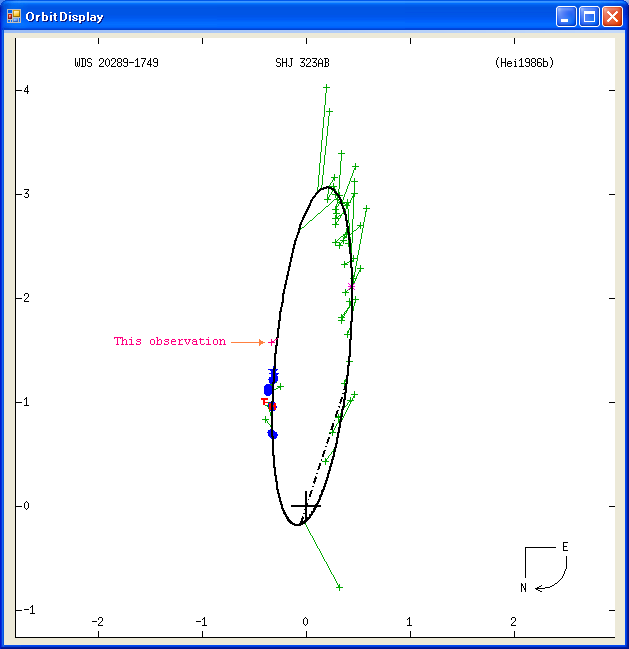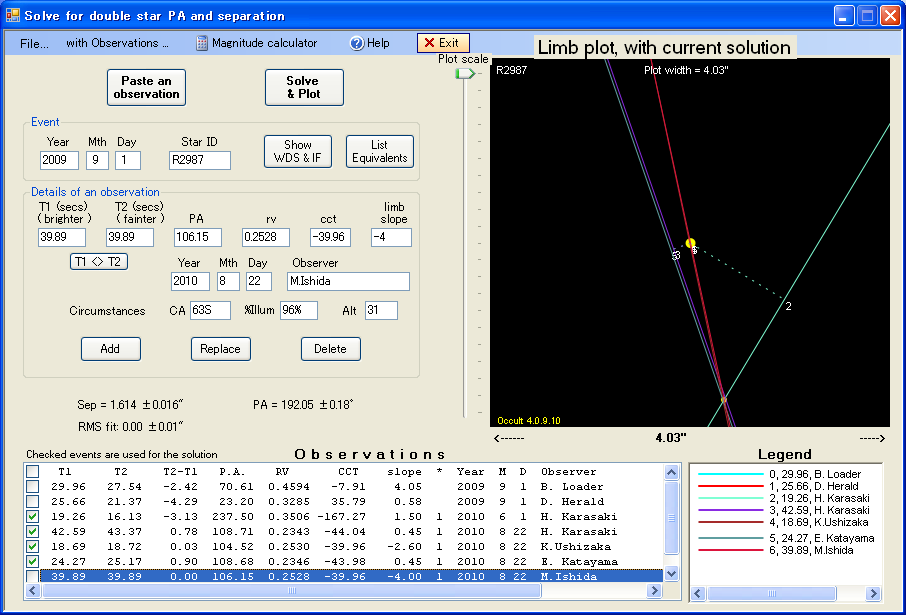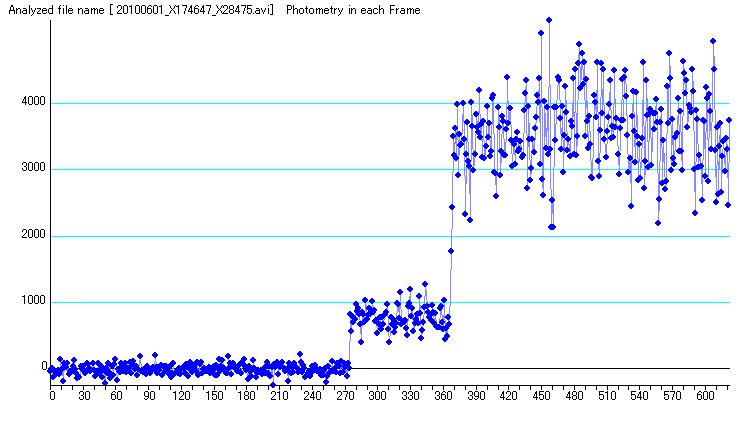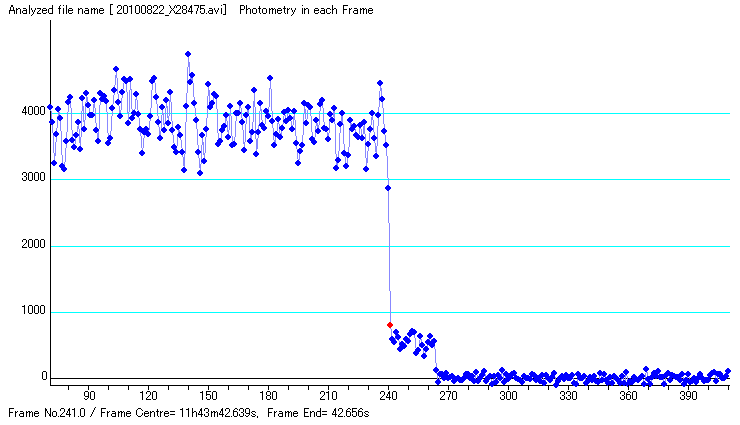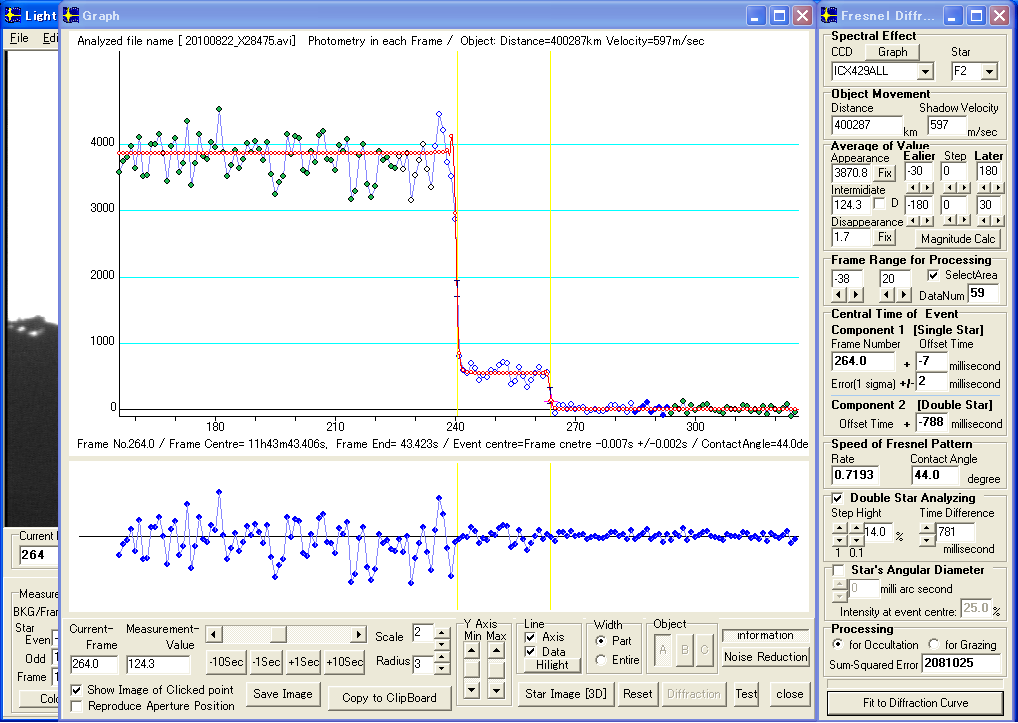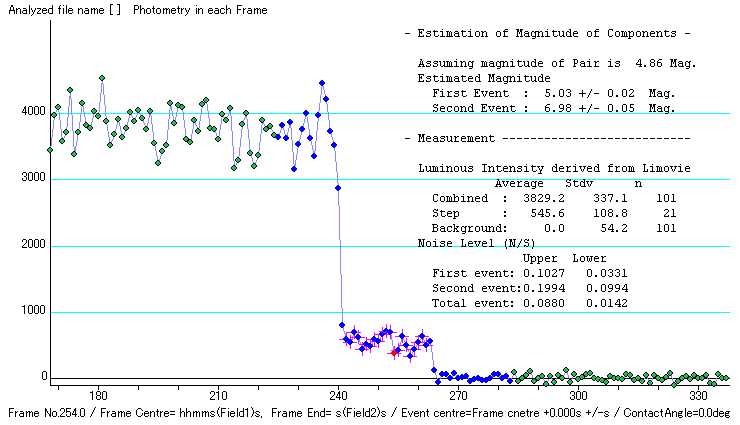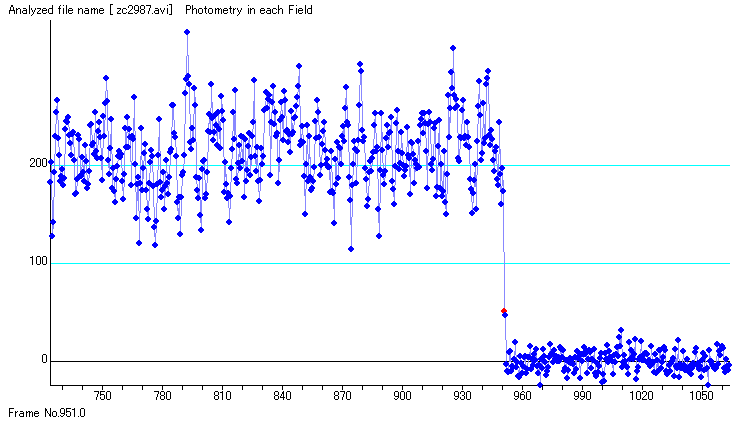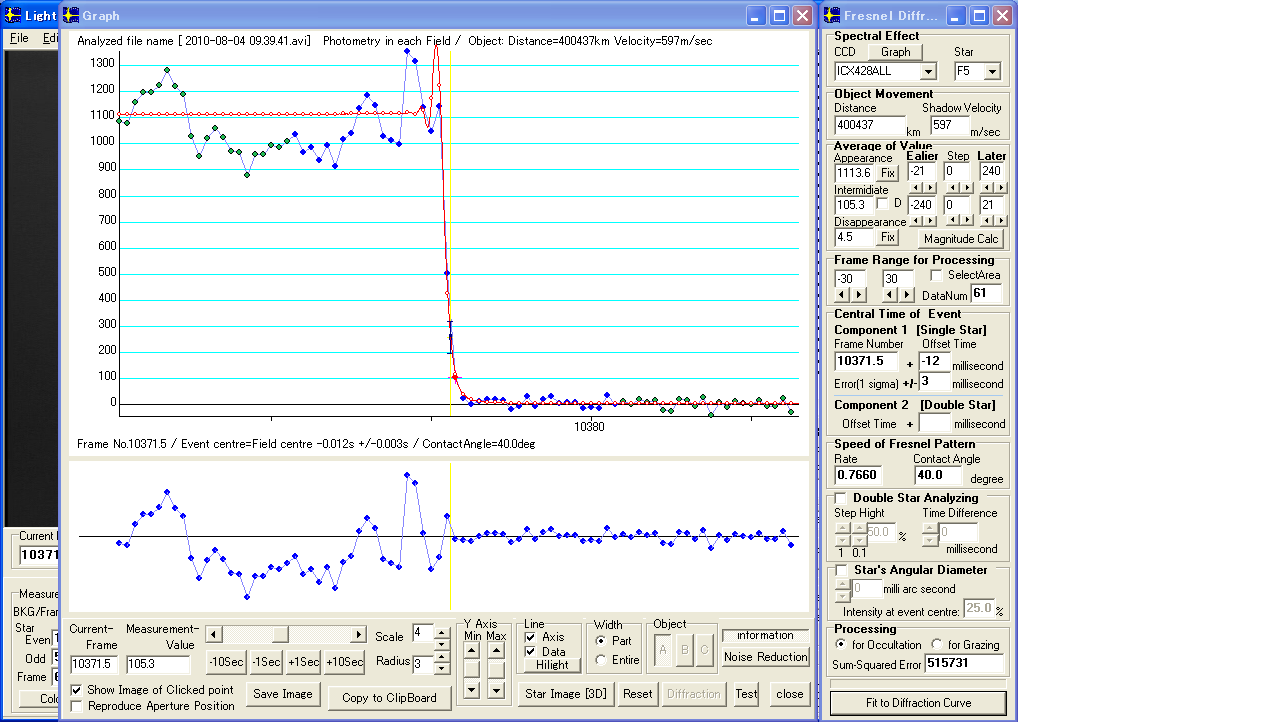Nov. 27, 2010
Kazuhisa Miyashita
| Separation | Position angle | Otained | 1.615+/-0.017" | 192.02+/-0.23 degrees | From orbit | 1.641" | 189.89 degrees |
|
Catalogue details XZ 28475 = SAO 163614 = ZC 2987 = rho Capricorni RA = 20 28 51.6114 PM = -0.00106s Dec = -17 48 49.433 PM = -0.0116" Mv = 4.86, Mb = 0.00, Mr = 0.00 Spectrum F3 Dia: .0000" [Estimated] Star is the mean position of AB Name Cmpt Yr1 Yr2: PA1 PA2 : Sep1 Sep2 : Mag1 Mag2: #1 #2 mean SHJ 323 AB 1782 2004: 174.0 194.0: 3.000 1.300: 4.97 6.88: R 2987 X174647 mean BU 61 AC 1871 1998: 135.0 150.0: 30.000 54.600: 4.97 13.30: R 2987 ------ SHJ 323 AD 1800 2001: 150.0 150.0: 228.200 258.700: 4.97 6.68: R 2987 R 2990 BU 61 BC 1898 1915: 150.0 148.0: 52.800 53.100: 6.88 13.20: X174647 ------ DOB 13 DE 1913 1998: 106.0 96.0: 59.400 54.300: 6.55 : R 2990 ------ WDS Discoverer codes BU Burnham, S.W. DOB Doberck, W.A. SHJ South, J. & Herschel, J. Orbital elements Name Cmpt Period a" i node T e peri SHJ 323 AB 278.00000 1.877000 113.3000 162.0000 1965.00000 0.91000 144.5000 Year PA Sep 2008 190.68 1.56 2009 190.38 1.59 2010 190.09 1.62 2011 189.81 1.65 2012 189.54 1.68 ------------------------------------------------------------------------------------------- Interferometric catalogue entries 202851.62-174849.2 ADS 13887 SHJ 323AB HD 194943 HIP 101027 20289-1749 N O Date PA Sep M1 M2 1982.7598 204.8 . 0.760 . . . . . n 3.8 1 Hrt2000a Sch 1983.4258 205.6 . 0.784 . . . . . 549 22 3.8 1 McA1987b Sch 1991.25 198.6 . 1.013 . 5.01 . 7.06 . 550 0.3 1 HIP1997a Thp 1991.25 . . . . 5.007 0.003 7.059 0.020 511 222 0.3 1 HIP1997f Thp 1991.25 . . . . 4.99 . 6.94 0.01 505 97 0.3 1 Fab2000a Thp 1991.25 . . . . 5.36 . 7.64 0.01 435 70 0.3 1 Fab2000a Thp 1991.3903 198.9 . 1.014 . . . . . 549 22 4.0 1 Hrt1993 Sch 1991.67 201.9 . 1.079 . 4.97 . 6.88 . 530 100 1.4 1 TYC2000a Tty 1991.7151 198.8 . 1.026 . . . . . 549 22 4.0 1 Hrt1996b Sch 1994.5246 198.7 . 1.163 . . . . . 503 40 0.8 1 Hor2006c Spe 1994.5246 198.2 0.5 1.196 0.008 . . . . 503 40 0.8 1 Hor1996 Spe 1999. 195. . 1.23 . . . 1.30 . 2100 3.6 1 Boc2001 Uds 1999.7672 195.1 . 1.26 . . . . . 541 88 0.6 1 Hor2000 Spe 1999.7836 194.4 . 1.27 . . . . . 541 88 0.6 1 Hor2000 Spe 2002.644 193.6 . 1.34 . . . . . 550 24 0.7 4 WSI2004a Sus 2004.669 193.9 . 1.30 . . . . . 550 24 0.7 1 WSI2006a Sus |
